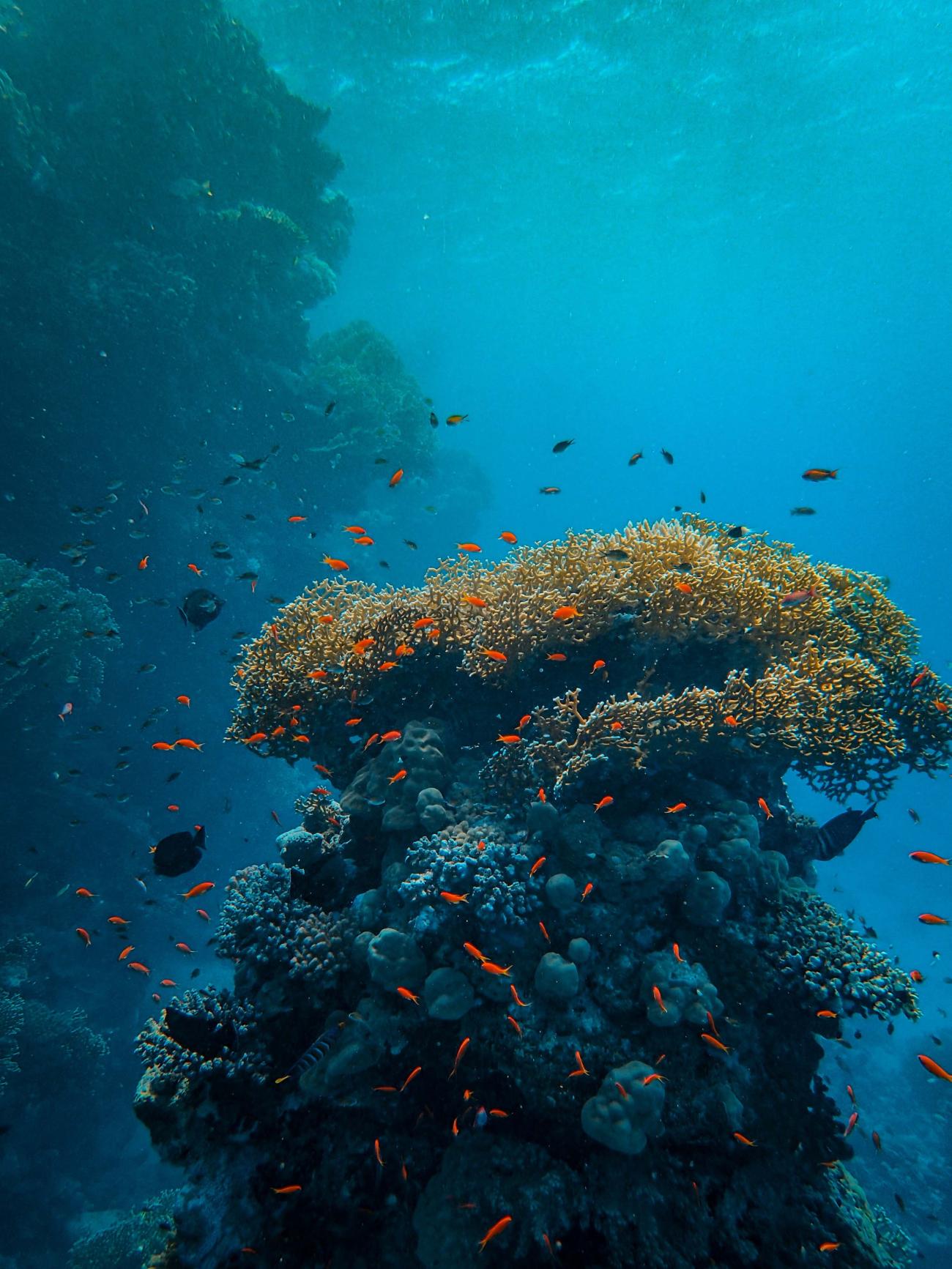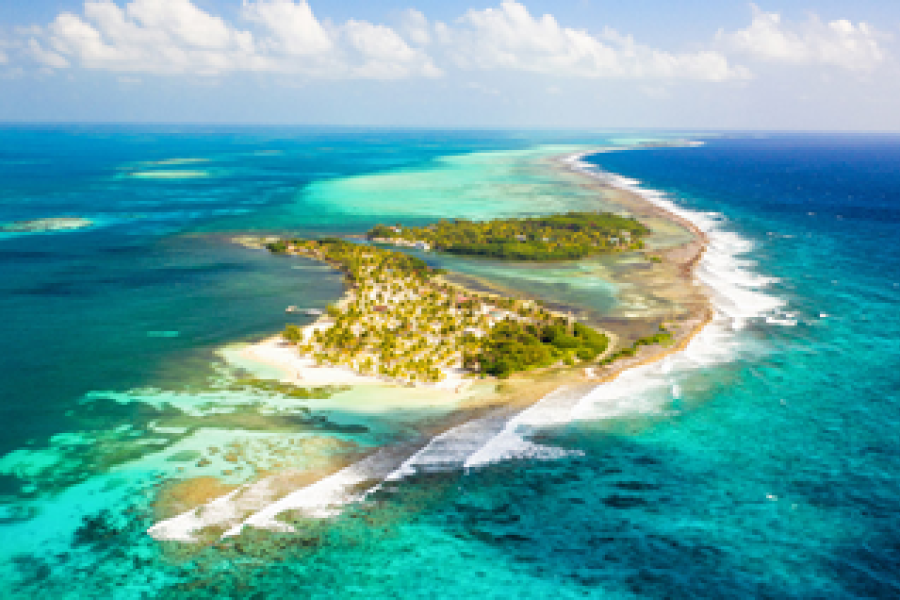Strengthening Protection for Caribbean Marine Protected Areas through SPAW

We have lost half of the world’s coral reefs and are consuming nearly one-third of our commercial fish stocks at unsustainable rates.
We have lost half of the world’s coral reefs and are consuming nearly one-third of our commercial fish stocks at unsustainable rates. In 2021 the United Nations General Assembly’s UN Decade on Ecosystem Restoration (2021-2030) as well as the Decade of Ocean Science for Sustainable Development (2021-2030) have begun, emphasizing the urgency of restoring oceans and coasts by reducing the pressure on these ecosystems so they can recover. The United Nations Environment Programme (UNEP) through the Cartagena Convention, provides the only regional legal framework for the protection and development of the Wider Caribbean Sea. The Cartagena Convention’s three protocols concerning land-based sources of pollution (LBS), oil spills, and specially protected areas and wildlife (SPAW) provide a joint base upon which to build sound, improved coastal and marine resources management.
The Specially Protected Areas and Wildlife (SPAW) Protocol
Article 4 of the SPAW Protocol calls for the establishment of protected areas as a mechanism for sustaining the natural resources of the Wider Caribbean Region. The Article provides for ecologically sound and appropriate use to conserve, maintain, and restore representative types of coastal and marine ecosystems and habitats and associated ecosystems critical to the survival and recovery of endangered, threatened, or endemic species of flora and fauna. The inclusion of Marine Protected Areas (MPAs) under the Protocol is a priority for the Parties given their importance as areas whose ecological and biological processes are essential to the functioning of the Wider Caribbean ecosystems that need to be carefully managed and actively restored.
At the upcoming SPAW Conference of Parties 11 on 27th July 2021, the proposed addition of the Dominican Republic’s “Cotubamana National Park” will be considered for addition to the list of MPAs, which currently includes 35 sites.
What are MPAs and why do they matter?
Marine Protected Areas (MPAs), as described by the International Union for Conversation of Nature, are “clearly defined geographical spaces, recognized, dedicated and managed, through legal or other effective means, to achieve the long-term conservation of nature with associated ecosystem services and cultural values.” They include marine reserves, fully protected marine areas, no-take zones, marine sanctuaries, ocean sanctuaries, marine parks, and locally managed marine areas.
Conserving biodiversity means protecting coral reefs, mangroves, and seagrass. The coral reef-mangrove-seagrass complex has been described as one of the world’s most biologically diverse and productive systems. The Caribbean Sea is considered the “high-diversity heart” of the Tropical West Atlantic. Without coral reefs, 25% of all marine life would die.
When people first think of coastal ecosystems, they picture snorkeling through coral reefs, or sea turtles eating seagrass. Others think of tourism or fisheries, but these ecosystems are providing more than that. For example, a 2016 study by the World Bank places the economic value of the Caribbean Sea coastal and marine ecosystems at US$54.55 billion.
Beyond the economic value, the coral reef-mangrove-seagrass complex brings increased safety to coastal communities as the systems act as a natural barrier, decreasing the impact of floods and storms. Without reefs to provide these services, the expected annual damages from flooding events would possibly double, and costs associated with frequent storms would triple. This land-ocean complex also allows mangroves to filter and purify water and coral reefs to create more sand for the Caribbean’s pristine beaches.
In addition to the role of MPAs in protecting and restoring declining marine communities and their habitats, ecological connections can extend the strategic importance of protected areas beyond their geographic borders. The linking of protected areas through their ecological connections and management strategies can create a functional network of conservation actions and allow the protected areas to work in unison to accomplish more than they would if they were ecologically and socially isolated from one another.
Expanding the area under protection is vital, but even more significant is ensuring that the already protected areas are being effectively managed. Covering more significant areas will not alone halt the loss of biodiversity. So often, the strategic thinking is the more MPAs, the better. However, without proper management to monitor the area for illegal fishing or people damaging the coral reefs, the fish populations will continue to decrease, coral reefs will continue to die, and MPAs will not succeed.

One example of a SPAW MPA that has demonstrated successful management is Glover’s Reef Marine Reserve established in 1993 and added to the SPAW list in 2012. Located 28 miles off the Belize coast, it lies at the heart of the Mesoamerican reef, the largest coral reef system (with roughly 800 coral patch reefs across 135 square miles) in the Western hemisphere.
Glover’s Reef is a critical nursery and feeding ground for sea turtles, sharks and rays, and numerous fish species. It is one of the only true atolls—strings of coral islands and reefs surrounding a pristine lagoon—in the Atlantic Ocean. Because of its unique ecosystems, in 1996 UNESCO designated the Glover’s Reef Atoll as a World Heritage Site.
The marine reserve’s success is due to the collaborative work of its stakeholders facilitated by an advisory committee made up of 14 representatives, including representatives of communities on the mainland. It is managed by Belize’s Fisheries Department with assistance from the non-governmental organization Wildlife Conservation Society (WCS). A reserve manager oversees a marine biologist and several rangers in charge of enforcing the restricted fishing (the main threat to the ecosystem’s health). The owners of small resorts on the atoll have contributed towards the salary of extra rangers to overcome staffing shortages, and traditional fishers are actively involved in supporting management actions.
Through the establishment of a scientific station on the atoll, the WCS assists the Fisheries Department through collaborative research and monitoring activities. A 2006 assessment found the zoning prohibitions on fishing within the marine reserve were an effective tool to protect the resource. Within the Conservation Zone, conch and lobster are in higher densities. With stakeholders actively supporting the marine reserve and demonstrating that they have a stake in its success, the MPA is likely to continue to be effective.
SPAW works to strengthen the network of Caribbean MPAs
In the last two years, SPAW has, with funding from the project “Enforcing Environmental Treaties in African, Caribbean and Pacific Countries (ACP)-MEAs Phase III,” sought to strengthen the network of MPAs in the Caribbean. This project aims to ensure that environmental treaties, priorities, decisions, tools, and best practices are shared, promoted, and effectively transformed into effective actions on the ground.
To this end, UNEP Caribbean Environment Programme, Secretariat of the Cartagena Convention, has, in the last two years, engaged in a series of projects, aimed at:
- Understanding the ecological connections of the region and how cooperation between MPAs will strengthen these links and help MPAs achieve their management and conservation goals;
- Examining the role and effectiveness of existing mechanisms for capacity development and technical cooperation among MPA professionals; and
- Identifying strategies and recommendations for creating an effective and sustainable relationship between protected areas in the Caribbean.
The species, habitats, and ecological connections that have been highlighted are just a few of the ecosystem elements that can be used as a foundation for building management relationships between marine and terrestrial protected areas.
We are at a pivotal moment where MPA management could be the difference between these living ecosystems surviving or dying. The evaluation of ecological linkages shows that all parts of the Caribbean are connected, but the linkages are strongest at the sub-regional scale. Building network relationships between protected areas may be most efficient and provide the most relevance to country jurisdictions if they are initially focused on the sub-regional scale. We must continue to create active stakeholder engagement, such as seen in the Glover’s Reef Marine Reserve, in other Caribbean MPAs, while building these sub-regional networks to encourage the conservation of the region’s unique and valuable biodiversity.
Please refer to the following Information Papers produced during the last biennium in support of Marine Protected Areas:
- The State of Nearshore Marine Habitats in the Wider Caribbean [EN]
- Regional Strategy Action Plan for the Valuation, Protection and/or Restoration of Key Marine Habitats in the Wider Caribbean 2021–2030 [EN][ES]
- Update on the Caribbean Marine Protected Areas Management Network and Forum (CaMPAM) and Its Major Activities During The 2019-2020 Biennium [EN][ES] [FR]
- Assessment of the Impact and Effectiveness of the Caribbean Marine Protected Area Network and Forum (CaMPAM) [EN][ES]
- SPAW Protected Areas of the Wider Caribbean: A comprehensive Booklet (updated March 1, 2021) [EN][ES]
All the above are uploaded to the SPAW COP 11 platform.
About the Cartagena Convention
The “Convention for the Protection and Development of the Marine Environment in the Wider Caribbean Region” was adopted in 1983 in Cartagena, Colombia. Known as the “Cartagena Convention, it became legally binding in 1986.
The Convention is supported by 3 technical Protocols, or sub-agreements, namely the:
- Protocol Concerning Cooperation in Combating Oil Spills;
- Protocol Concerning Pollution from Land-Based Sources and Activities (LBS or Pollution Protocol)
- Protocol Concerning Specially Protected Areas and Wildlife (SPAW or Biodiversity Protocol).
The Secretariat for the Cartagena Convention and its Protocols is based in Kingston, Jamaica and is supported by specialized Regional Activity Centres (RACs). The RAC for Marine Biodiversity is hosted in Guadeloupe (SPAW RAC), the one for Oil Spills is hosted in Curacao (RAC REMPEITC Caribe) while the Institute of Marine Affairs (IMA) in Trinidad and Tobago and The Center of Engineering and Environmental Management of Coasts and Bays (CIMAB) in Cuba are the RACs for pollution.
For more information please contact:
Ileana Lopez
Programme Officer, SPAW
Cartagena Convention Secretariat
Ecosystems Division
UN Environment Programme
14-20 Port Royal Street
Kingston, JAMAICA
Email: Ileana.lopez@un.org
Tel. 1 876 922 9267-69
Website: http://www.unenvironment.org/cep

